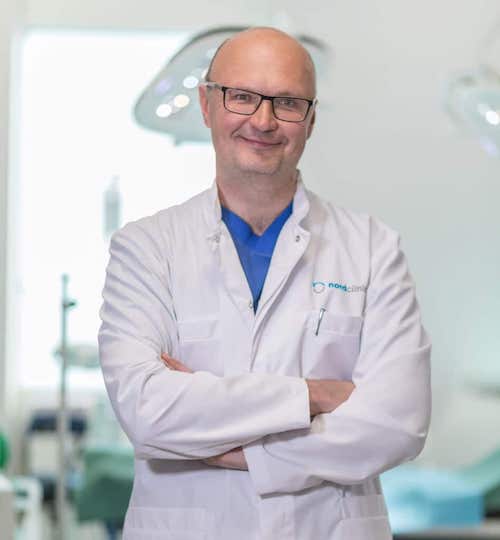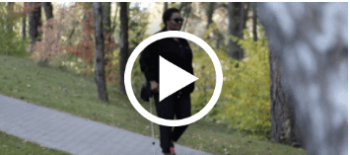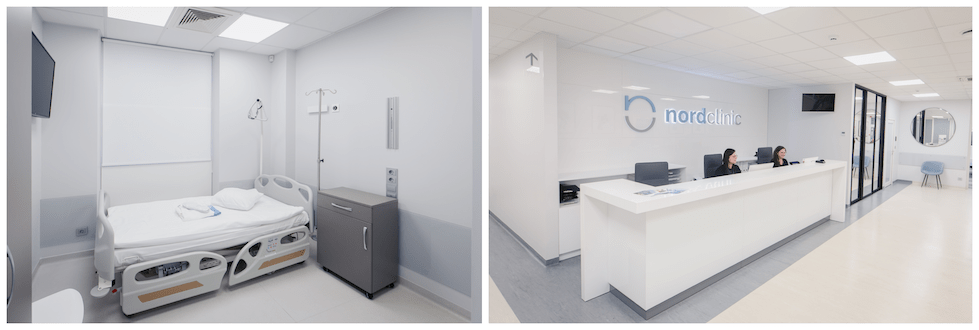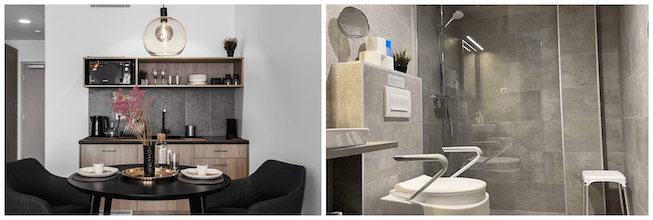Orthopaedic surgery
Leading medical tourism clinic
We are the leading medical tourism clinic in the Baltic region with over 10 years of experience. We are proud of the fact that around 90% of our patients come from abroad: the UK, Ireland and Scandinavian countries – this is the area we specialise in and our processes have been adapted to cater specifically for patients from abroad. Our team of surgeons perform over 4.000 surgeries per year, mostly plastic, bariatric, orthopaedic, general and gynecological surgeries.
Our patients and clinic in the media
Our patients' stories
Prices
- Hip replacement surgery – from 5.640 £
- Knee replacement surgery – from 6.340 £
- Hallux valgus – 1.465 £
- ACL reconstruction – 2.800 £
- Arthoscopic surgeries – from 1.300 £
- accommodation with medical care – from 62 £ per night
- consultation with the surgeon
- necessary health tests
- surgery
- implants
- anaesthesia
- hospitalisation
- 24/7 personal assistance during your stay
- transfers to / from the airport, hotel and clinic
- all documents translated to English
The clinic uses Zimmer Biomet, Smith & Nephew and other highest quality implants. The implant option is discussed in detail once the surgeon reviews your individual case.
Get your surgery for free by claiming a refund from your local health board. We cooperate with HSE and other health boards across the EU to help our Irish and EU patients receive a refund for their weight loss surgery in Lithuania. The clinic helps with the documents needed to claim a refund after following the EU directive route for medical treatment abroad.
Get your surgery for free by claiming a refund from your local health board. The clinic helps patients with the documents needed to claim a refund after following the EU directive route for medical treatment abroad. It applies to patients who are insured under the systems of one of the EU countries and may not get the surgery due to long waiting times.
- Hip replacement surgery – from 6.760 €
- Knee replacement surgery – from 7.600 €
- Hallux Valgus – 1.700 €
- ACL reconstruction – 3.150 €
- Arthoscopic surgeries – from 1.500 €
- accommodation with medical care – from 74 € per night
- consultation with the surgeon
- necessary health tests
- surgery
- implants
- anaesthesia
- hospitalisation
- 24/7 personal assistance during your stay
- transfers to / from the airport, hotel and clinic
- all documents translated to English
The clinic uses Zimmer Biomet, Smith & Nephew and other highest quality implants. The implant option is discussed in detail once the surgeon reviews your individual case.
Get your surgery for free by claiming a refund from your local health board. We cooperate with HSE and other health boards across the EU to help our Irish and EU patients receive a refund for their weight loss surgery in Lithuania. The clinic helps with the documents needed to claim a refund after following the EU directive route for medical treatment abroad.
Get your surgery for free by claiming a refund from your local health board. The clinic helps patients with the documents needed to claim a refund after following the EU directive route for medical treatment abroad. It applies to patients who are insured under the systems of one of the EU countries and may not get the surgery due to long waiting times.
Refund for EU patients

Get your surgery for free by claiming a refund from your local health board. The clinic helps patients with the documents needed to claim a refund after following the EU directive route for medical treatment abroad. It applies to patients who are insured under the systems of one of the EU countries and may not get the surgery due to long waiting times.
Experienced hip and knee surgeon

- More than 10 years of working experience
- Over 3.500 joint replacement surgeries performed
- Fluent in English
- President of Lithuanian Society of Orthopaedics and Traumatology
- Training abroad: Sweden, Switzerland, Germany, Austria
- Read more
Rehabilitation package
The rehabilitation centre is located at a SPA resort town called Druskininkai. It is equipped with modern facilities. The professionals there have years of experience working with people after various surgeries and injuries.
Rehabilitation in Lithuania – from € 190 / £ 160 per day
- personalized rehabilitation course
- room with TV and private bathroom
- three meals a day
- all medication needed
- transportation to/from the rehabilitation centre
An individual rehabilitation program is prepared for each patient depending on the type of surgery, general patient‘s well-being, health status and other factors.
Our clinic

Self-catered accommodation with medical care
Direct flights to Lithuania







Orthopaedic surgeries
Hip replacement
A hip replacement, also known as a total hip arthroplasty, is an orthopedic surgery performed in order to restore hip motion and relieve pain of the hip joint. During this surgery a dysfunctional hip joint is changed into a prosthetic implant. Note that hip replacement surgery is performed when all other treatments have not provided enough pain relief. Read more about hip replacement
Knee replacement
Knee replacement surgery, also known as arthroplasty, is generally regarded as an effective treatment for end-stage knee arthritis. It results in an improved knee function and significantly relieves severe pain caused by degenerative joint diseases. All knee replacement procedures are generally divided into 2 major groups, depending on whether the knee is replaced totally or partially. Read more about knee replacement
Shoulder replacement
Shoulder replacement is a last resort treatment for severely damaged shoulder joint. Physiologically, joint surface is lined with smooth and strong cartilage which allows movements through a wide range of motion. However, due to osteoarthritis, rheumatoid arthritis or severe joint trauma, lining cartilage becomes thin and rough. As a result, it is painful to move and it limits and disturbs daily activities. In such case shoulder replacement is an option. Read more about shoulder replacement
ACL reconstruction
ACL is usually damaged because of quick turns and sharp movements during sports which require sudden moving out of one place to another, and sudden stopping (e.g. basketball, gymnastics, football, skiing). If a damaged ligament is not treated it can lead to long-term pain and instability of the knee. When ACL ligament is damaged a person usually has trouble putting pressure on the knee, walking, and playing sports. Read more about ACL reconstruction
Rotator cuff repair
Even though some rotator cuff tears may be treated with conservative methods, there are cases that require surgical intervention. There are three main ways to surgically treat a rotator cuff tear, and the choice of the best method depends on various factors, including the severity of the tear and the unique elements of your shoulder anatomy. Repairing the rotator cuff involves using suture anchors (small rivets), which are used to attach the tendon to the bone. Read more about rotatory cuff repair
Knee arthroscopy
Knee arthroscopy is a surgical technique that allows a surgeon to view the inside of the knee and treat the damaged ligaments of the knee joint. It is a limited risk procedure with a number of benefits for a patient. Arthroscopic knee surgery is usually chosen instead of other surgical procedures because of shorter healing time, fewer stitches, less pain, and a lower risk of infection due to the smaller incisions. Read more about knee arthroscopy
Hallux Valgus
Untreated hallux valgus causes inflammation, pain, and misalignment of the toes. The symptoms often worsen when wearing uncomfortable shoes. Since the structure of the bones and soft tissue changes, bunions may also be responsible for a decreased sensation around the bunion. Fortunately, it is possible to treat hallux valgus through surgery, and thus, regain pain-free and aesthetic feet. The surgery helps to straighten the big toe, correct claw toes, and remove the ball of the foot (if one is present). Read more about Hallux Valgus surgery
Articular cartilage repair
Articular cartilage can be imagined as a lubricated cushion that covers the ends of the joint-forming bones. It reduces friction and provides a smooth surface for the joint as it bends and transmits weight. When articular cartilage is damaged, one will experience stiffness, pain, inflammation, and reduced range of motion. If left untreated the breakdown of the cartilage will get increasingly worse, eventually leading to osteoarthritis. In some cases the pieces of detached cartilage may get stuck in the joint and become locked leaving the joint motionless for some time. Read more about articulate cartilage repair
Send us your enquiry









